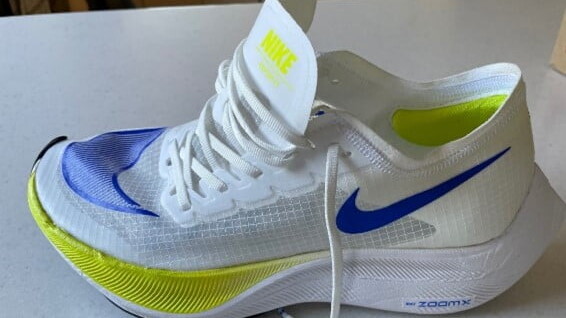
I have recently had the pleasure of running in a new shoe brand on the Australian Market, “On Running”. It stimulated me to update everyone on the latest evidence that is driving the most dramatic change in running footwear in the past 30 years, and I will do this in two parts – firstly as a bit of an education article on where footwear technology is heading, and then I’ll follow this up with a shoe review following my experiences with the new shoes mentioned above!
Over the past 30 years whenever you have gone looking for specific running shoes you have seen shoes lumped into categories ranging from the most cushioned neutral shoe (largely prescribed to those who are supinators- high arched rigid foot) right through to the highest motion control shoe with dual density posting on the inside midsole (prescribed for the heavier runner with a pronating foot).
Shops would display shoes in these categories – often in 3 sections titled: Cushioning; Neutral; Stability. This would allow the young shop assistant to direct you toward a shoe that would suit you based on a simple assessment of how much your foot rolled in when they watched you walk; or did a foot imprint on their “fancy computer” that demonstrated how much of your medial (inside) arch touched the ground (as per this diagram):

Numerous studies in recent years have categorically proven that pronation (or rolling inwards) in a runner is not linked to injury. The important consequence of this knowledge helps many of us stop wasting money on the wrong shoe. If pronation is not related to injury, then a motion control shoe is no more likely to prevent a pronator from suffering a running injury than any other shoe they may feel comfortable wearing.
Pronation is in fact a very normal thing. We run on varying surfaces and the foot needs to get flat on the ground at toe off to effectively propel us off the ground. It has been shown in recent studies that injuries per 1000 km of running were significantly lower among those who pronate significantly versus those considered to have neutral feet. The fact is that just because your foot pronates or rolls in, you are no more risk than any other foot posture in developing an injury. The rate at which one pronates is considered more important than the amount of pronation. In fact, when we video a person running in our clinic we don’t so much worry about whether they are pronating, but look to make sure the foot then corrects (supinates) into a more rigid lever for push off from the big toe.
There has long been a thought that more cushioning in a running shoe could help decrease injury risk (particularly in those with a more rigid higher arched foot). The theory behind this (also since proven incorrect) was that more cushioning, or softness, would decrease vertical impact forces upon landing. We know in running, and when people land from heights, that there are significant vertical forces that the body must absorb – in jumping sports these landing forces can be 6-8 times body weight and more per landing. Again, this has largely been disproven with softer midsoles actually leading to higher impact forces. Also faster running which results in higher vertical impact forces hasn’t been shown to lead to higher injury risk. So research is now showing that vertical forces are not helped by softer shoes, and that the lateral forces produced by supination and pronation are not related to injury, so attention now is turning far more to the geometrical forces involved in rolling from back to front of the shoes (more shearing forces) in the running action and reducing the energy cost of this as the best means of reducing injury and improving performance.
Consequently we are seeing a big shift away from shoes focusing on this motion control from side to side (frontal plane) to much more back to front (sagittal plane). Footwear companies are now more focused on the performance of the shoe, so enhancing your movement more than the traditional shoes that were focused around controlling your movement. The focus has changed away from the vertical ground reaction forces mentioned just mentioned to different forces such as the vibration and breaking forces involved in running. The new midsole materials are far better at absorbing these different frictional forces that occur at impact and push off in the running gait. The new midsole materials used are good at dispersing loads in all directions rather than just cushioning vertical impact forces.
The interesting thing is that shoes are returning to greater cushioning but more from a performance perspective than injury prevention perspective. In recent years the cushioning in shoes with the more traditional EVA foam has decreased as companies have tried to make their shoes lighter. With EVA, the more foam the heavier the shoe. I have always told patients two of the biggest enemies to a distance runner are heavy shoes and fatigue. The two are closely related and can lead to loss of form and change of biomechanics which will increase the risk of injuries.
Largely led by Nike, companies went looking for a mid-sole foam that was very lightweight but would still provide the cushioning and stability characteristics they wanted.
Various types of foam, where the main characteristic is energy return are now being found in shoes and this would appear to be the beginning of the end of shoes using traditional EVA foam. Nikes Reactive Foam (a thermoplastic rather than true foam) was shown in a study by Hoogkamer et al in 2019 to provide an average of 4% energetic benefit, and to the runner, this can be enormous. The study size was very small at 18 participants but subsequent performances in the so-called super shoes which has seen many world records set would indicate that there are significant performance benefits that can be gained from these new foams. Many studies since have found similar results meaning all major shoe brands are now pushing down this path.
As a result, footwear that we are now seeing and will be using in the future, if not already, will focus much more on geometry where the focus is on running economy and move away from the more traditional stability vs neutral shoe concept. The vast majority of shoes you will now find on the shelf would have been previously classified as neutral in nature, but the focus is on improving energy transfer through these newer foams to reduce fatigue and decreasing important impact forces.
An example of this newer foam is the Pebax material used by Nike – it is ultralight and most importantly very responsive allowing for great energy return so that the runner can move from foot strike to toe off with the least amount of energy therefore reducing muscle fatigue. This type of foam then allows companies to move back to increasing mid sole foam (stack height in a shoe) without adding weight. The main advantage of the increased stack height is it allows them to use other technology within that midsole, like the carbon plates we are seeing in many different shoes now.

So the obvious questions become how do these new shoes reduce energy used by the runner in the act of running. The focus is having the runner use less muscles and therefore less energy from the moment they strike the ground through to the moment they leave the ground. Getting this right will lead to less fatigue and should then lead to better performance and less injuries. In other words, the runner can run faster or further for the same energy cost that they had in their traditional shoe. If your body could handle that energy cost without getting injured then you should see improved performance from the shoe. If previously getting injured, then you should be able to run the same pace with less muscle use and therefore have less load on the muscles which will hopefully help to decrease running related overload injuries. It is not hard to see where the logic is going with this change in footwear design. I have yet to run in a pair of the much talked about Vaporflys pictured here but this shoe is largely made for racing with poor durability and will only last the average runner for approx 300-440km (about half the time of a normal training shoe) Nike do make more durable training shoes such as the React Miler, focused around the theories discussed above.
What I have had the benefit of, is running in shoes with this new technology foam – there’s a new player in the shoe market and in the next edition I’ll review my thoughts following a few runs with the new shoe and new technology.
You might like these other resources
Are Your Bones Strong Enough?
28 May 2024
BEWARE YOUR SCAN RESULTS!
23 February 2023
STAY OUT OF THE BASEMENT THIS SUMMER
23 December 2022
Staying Healthy – The Missing Pieces Of The Puzzle
17 November 2022
So I Don’t Need A Knee Reconstruction Anymore?
8 September 2022






